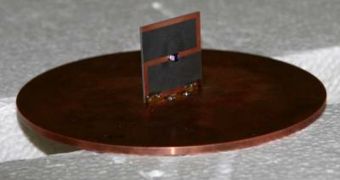A collaboration of scientists from the US National Institute of Standards and Technology (NIST), and partners in the industry and academia, was able to develop small-scale antennas that acted just like the real deal. In fact, the innovative devices are so good at what they were built to do, that there is no significant difference between their capabilities and those of larger, full-scale systems. According to PhysOrg, the new antennas could be used in emergency communication devices, micro-sensors and portable, ground-penetrating radars, which are equipments currently receiving a lot of attention.
The thing about conventional antennas is that they need to be as long as at least half of the wavelength they are transmitting. To give just an example, a 300 MHz signal requires an antenna at least half a meter long. But the new devices are developed out of metamaterials, which resemble normal materials, but were redesigned from within, at a microscopic scale, to exhibit new and peculiar physical properties. As such, the devices based on metamaterials only need to be one-fiftieth of the signal's wavelength. NIST experts, who collaborated with researchers from the University of Arizona in Tucson and Boeing Research & Technology, in Seattle, on the investigation, say that these minimum requirements could be improved even further.
“The purpose of an antenna is to launch energy into free space. But the problem with antennas that are very small compared to the wavelength is that most of the signal just gets reflected back to the source. The metamaterial makes the antenna behave as if it were much larger than it really is, because the antenna structure stores energy and re-radiates it,” Christopher Holloway, who is an engineer at NIST, explains. The antennas developed by the group are printed on copper squares with sizes of only 65 millimeters. A Z-shaped element on their backs acts like a metamaterial, storing energy magnetically.
This line of investigation, which could see numerous applications in a wide range of electronic devices, was, naturally, sponsored by the US Defense Advanced Research Projects Agency (DARPA), an institution known for its involvement in groundbreaking projects. “These metamaterials are much more 'frequency agile.' It's possible we could tune them to work at any frequency we want, on the fly,” the NIST researcher says. Something like this is not possible with conventional antennas, he concludes.

 14 DAY TRIAL //
14 DAY TRIAL //